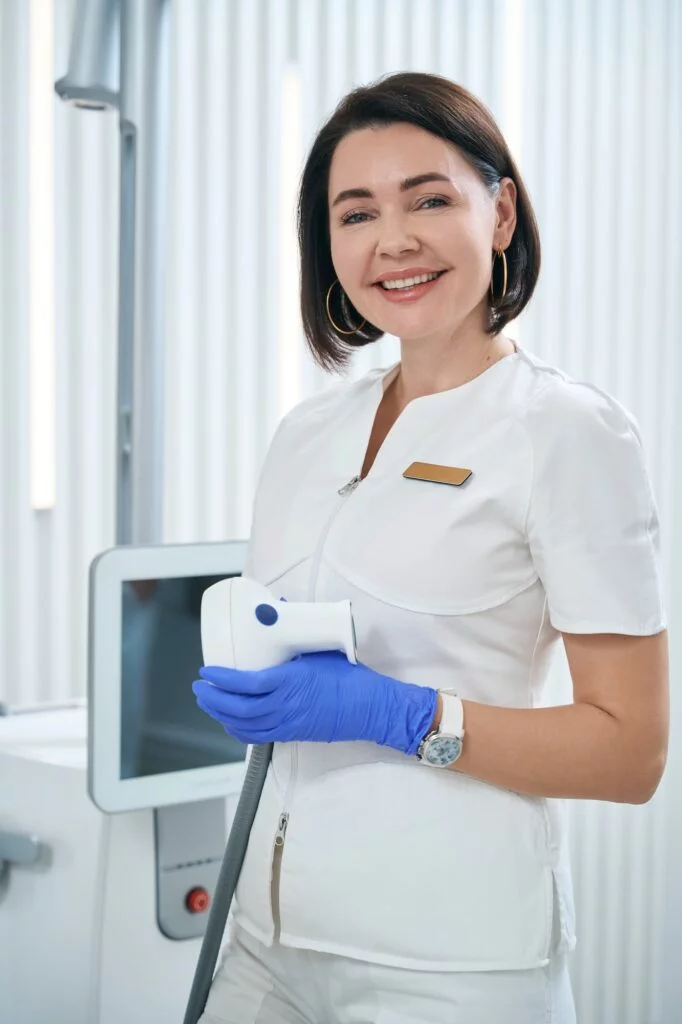CRH Banding
What Is CRH Banding?
CRH banding is a minimally invasive hemorrhoid treatment in which a small, tight rubber band is placed around internal hemorrhoid tissue, causing the tissue to shrivel up and form a small scar. This essentially stops the bleeding and swelling of tissue that can cause pain and discomfort in patients with hemorrhoids.
How Do I Prepare for My CRH Banding?
There are no special preparations needed for hemorrhoid banding, and normal activity is fine right after your in-office treatment.
What to Expect?
The first appointment will typically consist of a consultation and limited exam. During this visit, you may receive a physical exam, as well as an exam of the inside of the anal/lower rectal area with a short scope to see if your hemorrhoids are suitable for this type of treatment. There is no need for anesthesia, fasting, or other preparations. The CRH banding may not be appropriate for all patients. You and your physician will determine the most appropriate treatment for your diagnosis during the exam.
If CRH banding is recommended, treatment may start during that initial visit. Hemorrhoids are usually in three separate areas just inside the anal opening, and usually the largest, most symptomatic hemorrhoid is banded first. Additional appointments are then scheduled to treat the remaining hemorrhoids at two-week intervals with a final check-up two or more weeks after the last remaining hemorrhoid region is banded.
What Can I Expect After My CRH Banding?
Following hemorrhoid banding, we recommend normal activity as tolerated, except for heavy lifting or vigorous exercise on the treatment day. You can resume full activity the next day. You can have normal bowel movements during this time, but you may want to soak in a sitz bath, warm tub, or use a bidet for a gentler cleansing of the anal opening.
Some sensation of pressure or a mild bowel urge is common for the day or so after each banding session. Pain is quite unusual, but usually, over-the-counter pain relievers are okay to take, if needed. You’ll need to make some changes to prevent future problems, however. Straining due to constipation should be diligently avoided, so be sure to drink seven or eight glasses of water a day and add 15 grams of fiber to your diet (2 tablespoons of natural oat or wheat bran). Metamucil, Citrocel, Benefiber, flax, or other forms of soluble fiber may be helpful, as well. Your doctor will advise what seems best for your condition.
We also recommend that you not sit longer than necessary on the toilet. If you can’t have a bowel movement in that time, come back later. A “two-minute rule” can help keep you from straining during bowel movements without realizing it. Finally, when traveling, stay hydrated, avoid excessive alcohol, remember to eat fiber, and walk around when you can.
Where Will the CRH Banding Take Place?
Treatments are done by our doctors in our offices.
How Long Does the CRH Banding Take?
The procedure takes no more than a couple of minutes, with the entire visit typically lasting about 15 to 30 minutes long.
What Are the Risks Involved With a CRH Banding?
Side effects are rare but may include pain that does not respond to OTC pain relievers. This may indicate the bands are close to the area in the anal canal that contains pain sensors. Bleeding, urinary retention (the inability to urinate), and infection are also rare but may occur after CRH banding.
If you experience anything unexpected, notify your physician without delay.
What Are My Alternatives to This Procedure?
There is another option, although it is a more complex procedure called a stapled hemorrhoidopexy. This procedure was developed as an alternative to the conventional surgical removal of hemorrhoids called a hemorrhoidectomy. A stapled hemorrhoidopexy involves the use of a circular stapling device that removes the hemorrhoid tissue and staples the area closed. As compared to traditional hemorrhoidectomy, this procedure is generally less painful and recovery time is quicker. The downside is that it carries a higher risk of repeat hemorrhoids and is a more complex procedure, typically performed by a colorectal or general surgeon.
Do you suffer from chronic or severe hemorrhoids? CRH banding may be the treatment you need to get rid of your symptoms – for good. Contact the location nearest you to find out more.




